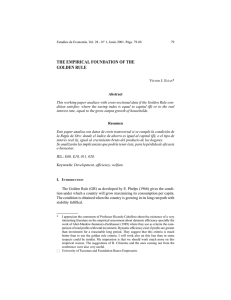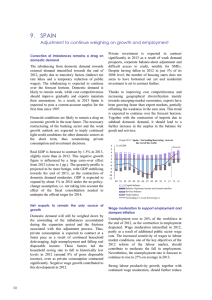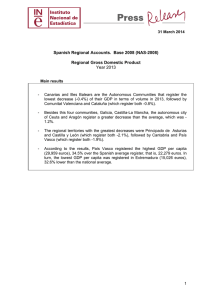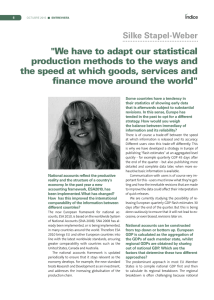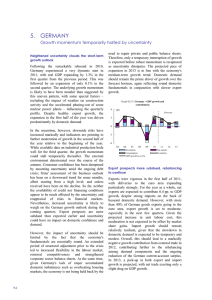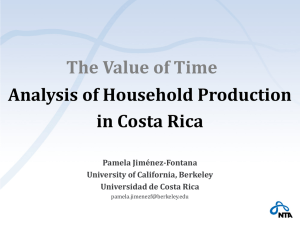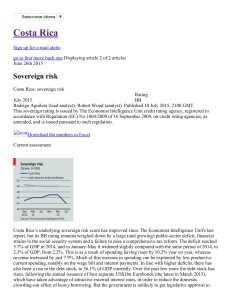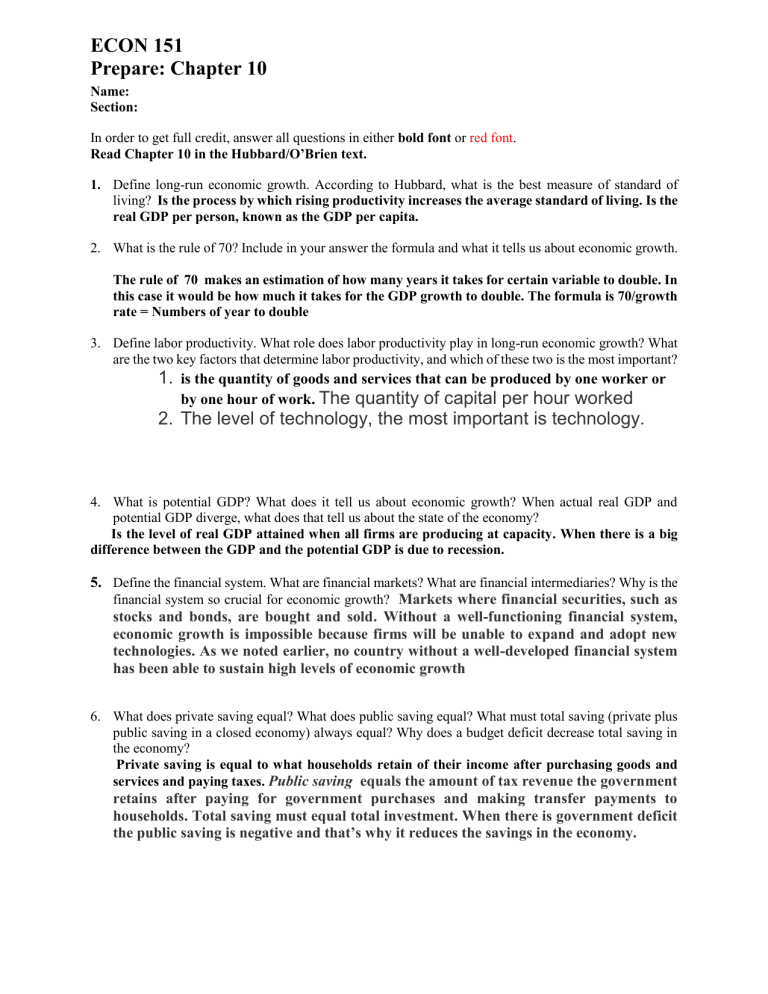
ECON 151 Prepare: Chapter 10 Name: Section: In order to get full credit, answer all questions in either bold font or red font. Read Chapter 10 in the Hubbard/O’Brien text. 1. Define long-run economic growth. According to Hubbard, what is the best measure of standard of living? Is the process by which rising productivity increases the average standard of living. Is the real GDP per person, known as the GDP per capita. 2. What is the rule of 70? Include in your answer the formula and what it tells us about economic growth. The rule of 70 makes an estimation of how many years it takes for certain variable to double. In this case it would be how much it takes for the GDP growth to double. The formula is 70/growth rate = Numbers of year to double 3. Define labor productivity. What role does labor productivity play in long-run economic growth? What are the two key factors that determine labor productivity, and which of these two is the most important? 1. is the quantity of goods and services that can be produced by one worker or by one hour of work. The quantity of capital per hour worked 2. The level of technology, the most important is technology. 4. What is potential GDP? What does it tell us about economic growth? When actual real GDP and potential GDP diverge, what does that tell us about the state of the economy? Is the level of real GDP attained when all firms are producing at capacity. When there is a big difference between the GDP and the potential GDP is due to recession. 5. Define the financial system. What are financial markets? What are financial intermediaries? Why is the financial system so crucial for economic growth? Markets where financial securities, such as stocks and bonds, are bought and sold. Without a well-functioning financial system, economic growth is impossible because firms will be unable to expand and adopt new technologies. As we noted earlier, no country without a well-developed financial system has been able to sustain high levels of economic growth 6. What does private saving equal? What does public saving equal? What must total saving (private plus public saving in a closed economy) always equal? Why does a budget deficit decrease total saving in the economy? Private saving is equal to what households retain of their income after purchasing goods and services and paying taxes. Public saving equals the amount of tax revenue the government retains after paying for government purchases and making transfer payments to households. Total saving must equal total investment. When there is government deficit the public saving is negative and that’s why it reduces the savings in the economy. 7. What is the market for loanable funds? Who demands loanable funds, and why do they demand these funds? Why is the demand for loanable funds downward sloping? The interaction of borrowers and lenders that determines the market interest rate and the quantity of loanable funds exchanged. The demand for loanable funds is determined by the willingness of firms to borrow to engage in new investment projects, such as building new factories or carrying out research and development of new products. the demand for loanable funds is downward sloping because the lower the interest rate, the more investment projects firms can profitably undertake, and the greater the quantity of loanable funds they will demand. 8. Who supplies loanable funds, and why is the supply of loanable funds upward sloping? The supply of loanable funds is determined by the willingness of households to save and by the extent of government saving or dissaving. Is upward sloping because the higher the interest rate, the greater the quantity of saving supplied. 9. What factors shift demand for loanable funds? What factors shift the supply for loanable funds? What is “crowding out”? Budget deficit or surplus will affect shift the demand and supply for loanable funds . Crowding out Refers to a decline in private expenditures (in this case, investment spending) as a result of an increase in government purchases 10. What are the four phases of the business cycle, and in what order do they occur? Why does the production of consumer durable goods fluctuate more than real GDP over the business cycle? Expansion, Recession, Peak, Through are the four phases of the business cycle. Manufacturing production, particularly of durable goods such as automobiles, fluctuates more than the production of services because during a recession, households will cut back more on purchases of durables than they will on purchases of services. So, the increase in services as a percentage of GDP may have helped to stabilize the economy. 11. How does the business cycle affect the inflation rate? The unemployment rate? The inflation rate usually increases during economic expansions—particularly near the end of an expansion and the inflation rate usually decreases during recessions. During the expansion the unemployment decreases and during recession the unemployment rate is higher.

